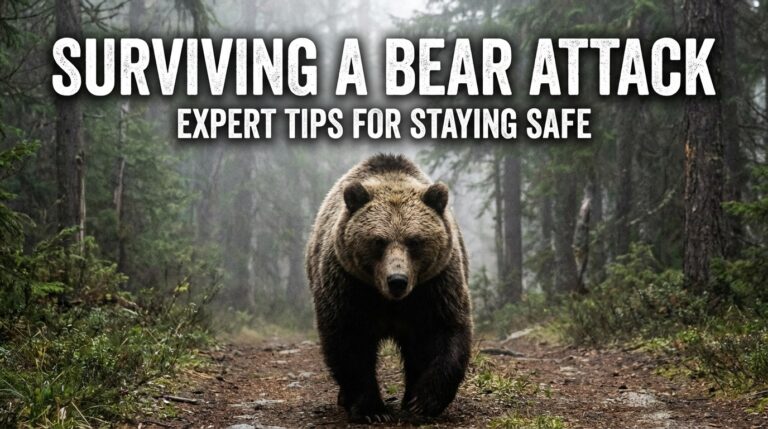
Standing at the edge of a pristine alpine lake last summer, watching osprey dive for trout while mountain peaks reflected in crystal-clear water, I never imagined that such scenes might become casualties of political maneuvering in Washington D.C. Yet the Trump administration’s proposal to repeal the EPA’s 2009 “endangerment finding” could fundamentally alter the trajectory of conservation in America.
Bottom Line Up Front
The EPA’s move to eliminate the scientific finding that greenhouse gases endanger public health threatens to unravel 15 years of climate-based conservation progress. For outdoor enthusiasts, wildlife watchers, and anyone who values America’s natural heritage, this represents the largest potential setback to environmental protection in decades.
Understanding the Endangerment Finding
The 2009 endangerment finding wasn’t just bureaucratic paperwork—it was the scientific foundation that allowed federal agencies to regulate greenhouse gas emissions under the Clean Air Act. This finding enabled everything from fuel efficiency standards for vehicles to emissions limits for power plants, creating a comprehensive framework for addressing climate change.
EPA Administrator Lee Zeldin calls the repeal “the largest deregulatory action in the history of America,” targeting what he describes as regulations that “regulate out of existence” segments of the economy. But for those of us who spend our weekends in national forests and our vacations exploring remote wilderness areas, the stakes are far more personal.
What This Means for Wildlife
The ripple effects of eliminating climate regulations will be felt most acutely by the species we love to observe and photograph:
Migratory Birds: Climate change has already shifted migration patterns across North America. Without federal action to limit emissions, accelerating temperature changes could disrupt the intricate timing of breeding cycles, food availability, and traditional flyways. The mountain bluebirds I photograph each spring in Colorado’s high country may find their preferred elevation zones shifting faster than they can adapt.
Marine Ecosystems: Ocean acidification and warming seas threaten everything from Pacific salmon runs to the kelp forests that support entire coastal food webs. Removing the regulatory framework that limits carbon emissions essentially abandons these ecosystems to continued degradation.
High-Elevation Species: Mountain goats, pikas, and alpine wildflowers face habitat compression as warming temperatures push them toward ever-higher elevations. Eventually, there’s nowhere left to climb.
Impact on America’s Protected Lands
Our national parks, wilderness areas, and wildlife refuges aren’t immune to policy changes happening in Washington. Climate regulations have helped slow the pace of environmental change that threatens these treasured landscapes:
Wildfire Management: Increased carbon emissions contribute to the extreme fire seasons that now threaten iconic places like Yellowstone and the Sierra Nevada. Without federal limits on greenhouse gases, fire suppression efforts may become increasingly futile.
Water Resources: The Colorado River system, already strained by decades of drought, depends on mountain snowpack that’s increasingly vulnerable to warming temperatures. Eliminating climate regulations removes a crucial tool for protecting these water sources.
Ecosystem Stability: The complex relationships between predators, prey, and plant communities that make wilderness areas so compelling to explore depend on relatively stable environmental conditions. Accelerated climate change disrupts these relationships faster than they can naturally adapt.
The Conservation Community’s Response
Environmental groups are already mobilizing legal challenges, but court battles take years while ecosystems change in real-time. Christine Todd Whitman, who led the EPA under President George W. Bush, warned that abandoning the endangerment finding “imperiled the lives of millions of Americans” and betrays the agency’s core mission.
Fred Krupp of the Environmental Defense Fund emphasized that the endangerment finding “has supported commonsense solutions that reduce pollution, give us cleaner air and protect our health and our jobs.” For outdoor enthusiasts, cleaner air means better visibility on those epic sunrise photography sessions and healthier conditions for backcountry adventures.
What Outdoor Enthusiasts Can Do
The regulatory rollback doesn’t eliminate individual responsibility or opportunity for conservation action:
Support State-Level Initiatives: Many states maintain their own climate and conservation programs independent of federal regulations. California’s vehicle emissions standards and renewable energy mandates continue regardless of federal policy changes.
Choose Conservation-Minded Gear: Solar generators, efficient camping equipment, and low-impact outdoor practices reduce individual carbon footprints while maintaining outdoor adventure capabilities.
Document Environmental Changes: Wildlife photographers, birders, and outdoor enthusiasts are uniquely positioned to document environmental changes over time. These observations become valuable data for future conservation efforts.
Engage in Citizen Science: Programs like eBird, iNaturalist, and local wildlife monitoring projects help scientists track ecosystem changes that political appointees might prefer to ignore.
The Bigger Picture
Climate scientist Scott Saleska warned that repealing the endangerment finding “would be like a driver who is speeding towards a cliff taking his foot off the brake and instead pressing the accelerator.” For those of us who find meaning and restoration in wild places, this acceleration toward environmental instability threatens the very landscapes that define our outdoor experiences.
The administrative process for finalizing this repeal will take at least a year, including public comment periods and likely court challenges. Environmental groups promise vigorous legal opposition, and the Supreme Court’s 2007 ruling giving EPA authority to regulate greenhouse gases remains in effect.
Looking Forward
Whether you’re a weekend warrior exploring state parks or a serious backcountry adventurer tackling remote wilderness areas, the loss of federal climate regulations represents a fundamental shift in how America approaches conservation. The places we love—from desert canyons to old-growth forests—face an uncertain future without the regulatory tools that have helped slow the pace of environmental change.
The next time you watch sunrise from a mountain summit or listen to wolves howl across a wilderness valley, remember that these experiences depend on ecosystems that have evolved over millennia. Political decisions made in air-conditioned offices in Washington D.C. will determine whether future generations inherit landscapes as wild and beautiful as the ones we explore today.
The stakes couldn’t be higher, and the timeline for meaningful action continues to shrink. America’s wild places don’t vote, but those of us who love them do—and in the end, that may be their best hope for protection.





